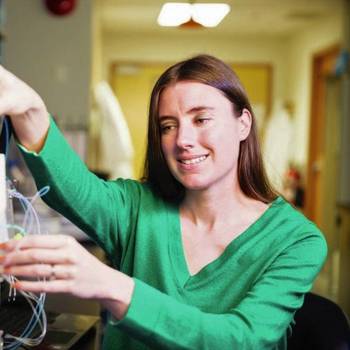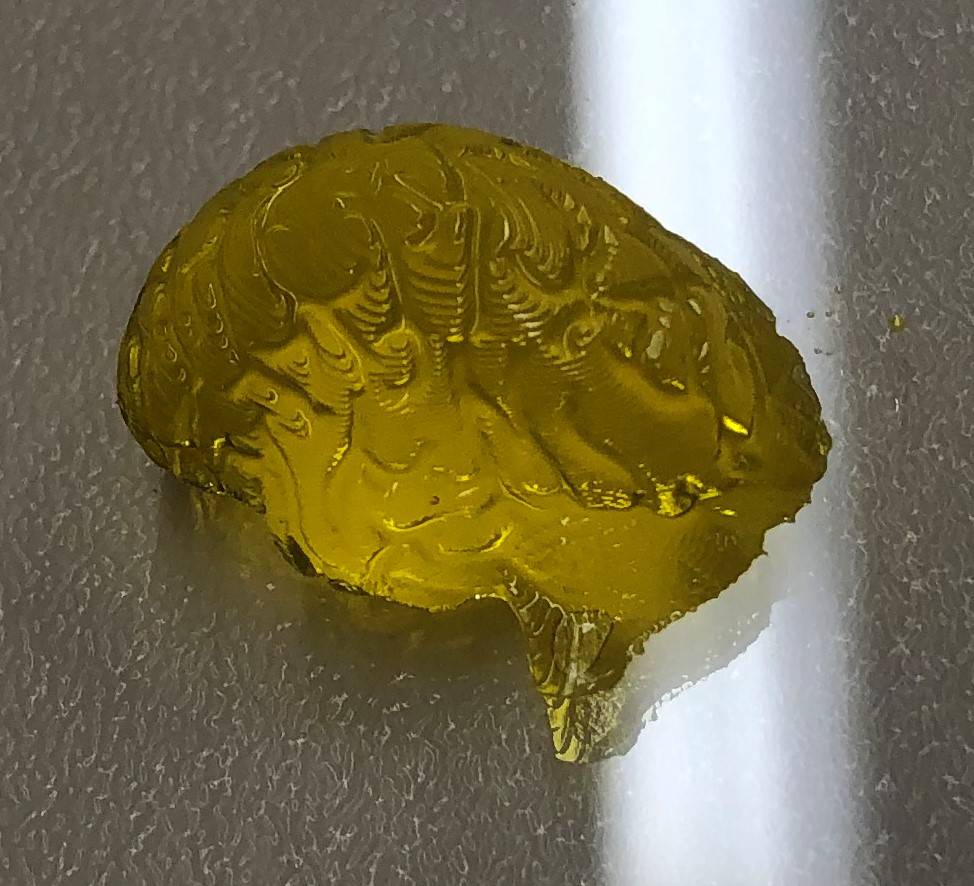The Lab of Dr. Stephanie Willerth
Interdisciplinary tissue engineering and regenerative medicine research lab
Welcome to the Willerth Laboratory!

Our interdisciplinary research group develops novel tools that help advance tissue engineering and regenerative medicine. The cornerstone of our research is improving strategies for engineering neural tissue. Our group works with both embryonic stem cells and induced pluripotent stem cells. These cells can differentiate into any cell type found in the human body. This special property makes them attractive targets for regenerative medicine and tissue engineering. The end goal of our research is to engineer tissues suitable for transplantation in the human nervous system for treatment of diseases like Parkinson's or to repair damaged tissue found in the spinal cord to promote recovery of lost function.
Producing functional neural tissue from pluripotent stem cells in a consistent and high throughput manner remains challenging. We develop bioactive scaffolds for directing stem cell differentiation using both physical and chemical cues. My research group has developed many types of biomaterial scaffolds, including fibrin hydrogels, multifunctional nanofibers, functionalized microfibers, and microspheres that provide controlled release of proteins and small molecules, for promoting the differentiation of pluripotent stem cells into neural phenotypes. Our recent work has focused on using 3D printing as tool for engineering personalized neural tissue models of disease.. More details on this work can be found at the Research and Publications links. More information on Dr. Willerth's start-up Axolotl Biosciences can be found here.
More details on this work can be found on our Research and Publications pages and on Dr. Willerth’s Google Scholar profile and ResearchGate profile.
Dr. Stephanie Willerth, Dr. Laura De La Vega and Laila Abelseth founded Axolotl Biosciences - a company dedicated to making novel bioinks for printing stem cell-derived tissues. Learn more at axolotlbiosciences.com.
Research
Engineering neural tissue by combining pluripotent stem cells with naturally derived biomaterial scaffolds
We develop 3D biomaterial scaffolds derived from natural sources for culturing and differentiating pluripotent stem cells into functional neural tissue. Such scaffolds can also be used to study stem cell behavior in a 3D environment that replicates the stem cell niche as opposed to using traditional 2D culture methods. We differentiate human embryonic stem and induced pluripotent stem cells (iPSCs) seeded inside of 3D fibrin scaffolds into the cells found in the central nervous system. Fibrin based biomaterial scaffolds possess significant promise for transplanting stem cell therapies in vivo as multiple groups have successfully used fibrin scaffolds to significantly increase cell survival and differentiation. My group has focused on using the protein fibrin as a biomaterial microenvironment for studying pluripotent stem cell behavior. My group has optimized 3D fibrin biomaterial scaffolds to promote neuronal differentiation of mouse induced pluripotent stem cells while demonstrating the effectiveness of a new neuronal differentiation protocol. We recently investigated protocols for differentiating human iPSCs into dopaminergic neurons and observed that the human cells degraded the fibrin at an increased rate compared to the mouse cells. Thus, we are currently focused on developing fibrin scaffolds with improved stability and chemical properties tailored to human induced pluripotent stem cell culture. We also performed transcriptome analysis comparing the differentiation efficiency of human iPSCs seeded inside of 3D fibrin scaffolds to those seeded on 2D laminin surfaces and our findings will be used to further optimize the chemical properties of fibrin. Once we have determined a stable fibrin scaffolds with appropriate properties for promoting neuronal differentiation of human iPSCs, we will translate this formulation into a bioink suitable for 3D printing. 3D bioprinting will produce functional neural tissues in a rapid, reproducible high-throughput manner for end applications in drug screening and developmental biology. Our 3D printing work is being conducted in collaboration with Aspect Biosytems.Using functionalized transcription factors to engineer neural tissue
![Using functionalized transcription factors to engineer neural tissue]()
Our partner company - iProgen Biotech Inc. - developed a proprietary intracellular protein delivery technology called IPTD that enables proteins to be taken up efficiently by human cells. IPTD consists of a delivery-enabling peptide sequence that is added to the target protein. This sequence promotes endocytosis of the protein into the endosome. The protein is then transported through the secretion pathway in retrograde, enabling it to reach the desired destination of the nucleus in the case of transcription factors. This technology greatly expands the potential protein targets for therapeutic applications. For example, transcription factors, like Ascl1, have short half-lives in vivo and are not taken up by cells. Functionalizing Ascl1 with IPTD addressed both these issues, turning it into a powerful therapeutic. Our 2016 publication demonstrated that Ascl1-IPTD rapidly generates mature neurons from human pluripotent stem cells when compared to a commercially available differentiation protocol. We are now investigating the potential of this protein to reprogram human fibroblasts into neurons direct. Popular reprogramming methods use 1) lentiviral transfection to induce protein expression, or 2) cocktails of small molecules to transform cells into different phenotypes. However, these methods have significant disadvantages, limiting their utility. These drawbacks include low reprogramming efficiency, inconsistent levels of protein expression, and random oncogene activation. Our novel reprogramming method uses a avoids these translational limitations associated with current methods, while providing significant improvement in reprogramming efficiency.
Novel drug delivery systems for engineering tissues from pluripotent stem cells
Producing functional neural tissue from pluripotent stem cells in a consistent and high throughput manner remains challenging. We develop bioactive scaffolds for directing stem cell differentiation using both physical and chemical cues. My research group has developed many types of biomaterial scaffolds, including fibrin hydrogels, multifunctional nanofibers, functionalized microfibers, and microspheres that provide controlled release of proteins and small molecules, for promoting the differentiation of pluripotent stem cells into neural phenotypes. Our recent work has focused on using 3D printing as tool for engineering personalized neural tissue models of disease.. More details on this work can be found at the Research and Publications links. More information on Dr. Willerth's start-up Axolotl Biosciences can be found at axolotlbiosciences.com.
We have also fabricated novel microspheres to deliver small molecules in a controlled fashion. As their name implies, microspheres are spherical particles with diameters in the micrometer range and these particles can be produced from natural or synthetic materials. The major benefit of using microspheres is that they can deliver bioactive drugs over a variety of time courses depending on the fabrication conditions of the microspheres. We developed a novel method for engineering neural tissue by combining retinoic acid releasing microspheres into aggregates of human iPSCs, where they promoted neuronal differentiation. Dr. Willerth was recognized as a Young Innovator in 2015, based in part on the work published in Cellular and Molecular Bioengineering. On-going work by the group involves characterization of microspheres that deliver the small molecules purmorphamine and guggulsterone – both of which promote neuronal differentiation of hiPSCs. We will demonstrate how different combinations and concentrations of these drug-releasing microspheres can be used to engineer different types of neural tissue.
Opportunities
Opportunities Available:
Please contact Dr. Willerth (willerth@uvic.ca) with the following information to inquire about the following positions. Please note due to COVID-19 restriction - it is difficult to accept international students at this time.
Post Doctoral Researchers
Prospective post-doctoral candidates will be evaluated on an individual basis and are highly encouraged to pursue external funding.
If interested, please submit the following documents.
- Cover letter explaining interest in the Willerth lab and proposing a potential project based on our previously published work
- C.V.
- Copies of relevant publications
Graduate Students
The Willerth lab is always looking for highly motivated graduate students who have an interest in stem cell biology, neuroscience, drug delivery, and tissue engineering. If you are interested, please contact Dr. Willerth directly in addition to applying through the following pathways. Students are also encouraged to apply for fellowships through both NSERC and CIHR.
Engineering students can apply through the Department of Mechanical Engineering.
Biology and neuroscience students can apply through the Division of Medical Sciences.
Undergraduate Studentss
Undergraduate students have a variety of opportunities to work in the Willerth lab. Our group accepts students for co-op positions (usually in combination with NSERC Undergraduate Student Research Awards - please check with the Mechanical Engineering office for deadlines), independent study projects, technical projects, honors thesis, and on a volunteer basis. To apply, please send the following documentation to Dr. Willerth.
- Cover letter describing type of position desired and a paragraph explaining your interest in the lab
- Resume with references
- Transcript
Contact
Dr. Stephanie Willerth, Ph.D.
Professor of Biomedical Engineering
Department of Mechanical Engineering
Division of Medical Sciences
willerth@uvic.ca
Mailing Address:
University of Victoria
PO Box 1700 STN CSC
Victoria, British Columbia V8W 2Y2
Telephone:
250-721-7303
Fax:
250-721-6051
Office location:
Engineering Office Wing 513
Laboratory location:
Medical Sciences Building 336
